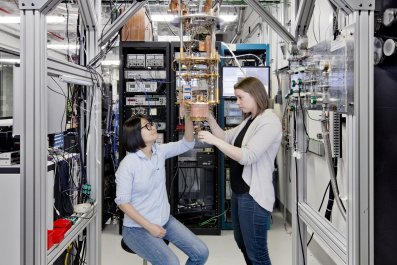The National Institutes of Health has long been a treasure of undetermined worth. The largest funder of life science research in the world, the NIH spends about $30 billion annually on academic research. Scientists use NIH grants to unravel genomes, map the deep interiors of cells and forage for novel solutions for problematic diseases.
But how much of that $30 billion leads to tangible results for the average taxpayer has not been well understood. That disconnect has led policymakers to question the size of the NIH budget—most recently in the form of a $1.23 billion cut proposed by the Trump administration. A new study shows the ties that bind NIH-funded laboratory research to the outside world may be stronger than suspected.
To investigate the practical worth of NIH funding, researchers from Harvard Business School, MIT and Columbia University searched for links between NIH grants and patents. Because they are the first step for ushering a new product into the world, private patents indicate the commercial usefulness of NIH-funded work. The grant-to-patent connection follows two routes: Scientists and their universities may patent discoveries made at their laboratories or commercial developers may license those discoveries. Either way, patent applications cite scientific publications as evidence for their legitimacy, and those publications cite the NIH grant that funded the research.
Following this trail enabled the researchers to parse just how many grants supported work that ended up having broad relevance. "These were bread crumbs we were mining and exploiting," says study author Pierre Azoulay, a professor at the MIT Sloan School of Management.
The team collected data on 365,380 grants awarded between 1980 and 2007. According to their analysis, reported this week in Science, 31 percent of these grants were cited in 81,462 patent applications submitted by private companies. An additional 5 percent were cited in patent applications by the universities where the research took place. These rates indicate that NIH-funded research "is not being done in an ivory tower," says Azoulay. "Companies use it as input in their own discovery efforts."
Among the NIH-linked patents they scoured, the authors found about 4,400 that were tied to drugs approved by the Food and Drug Administration. However, the average time between the initial funding for proposed research and commercial licensing of a laboratory discovery was 10 to 15 years. "We've become spoiled, thinking that things go from idea to prototype to product in a month or a few years," says Azoulay. "That is not the right time scale to think about how medical progress happens."
The study also looked at whether basic or applied research was more likely to be commercialized. There's a long-running argument among scientists and policymakers about the comparable value of basic research—which stems largely from curiosity and has no specific aim—versus applied research, which is targeted toward a specific goal. To address this issue, the researchers compared the number of patents tied to NIH grant applications that referenced a particular disease or group of patients with those that did not. It turns out that both approaches are equally fertile ground for future commercial development. "We should find other things to argue about," says Azoulay.
The study does not address the question of whether NIH funding cuts are a good idea. However, Michael Kalutkiewicz, who studied NIH funding as a former researcher with the Academy of Radiology Research, says the analysis provides exactly the kind of details people arguing in favor of preserving the NIH budget need. "This paper is another step toward that goal," he says. "The more evidence, the better."
Kalutkiewicz points out that the Obama administration was strident in its demand for solid evidence about the effectiveness of various government-funded programs. The current administration, though, has been intent on eliminating or reducing funding for programs that impede jobs or show no other economic benefit. But bringing this newly understood link between academic research and industry into such consideration is entirely in the hands of policymakers.
"It will be up to people in D.C.," says Kalutkiewicz, "to take this up and convince folks that slashing the budget will cost in patents, jobs and exports."




















